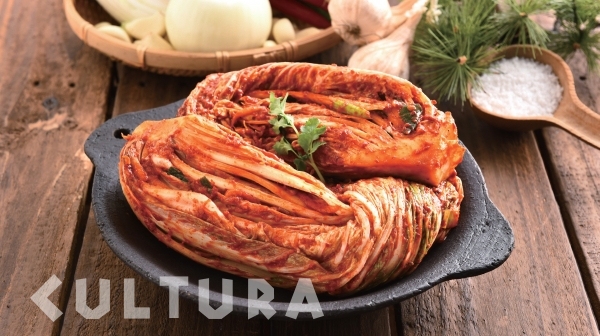
Traditionally, there are three basic elements in a typical Korean meal: a bowl of rice, a bowl of broth or clear soup, and a plate of kimchi. They have long been considered the staples in Korean cuisine. However, more and more young Koreans today prefer to have bread or noodles, a trend that has significantly reduced annual rice consumption. Many people now also enjoy potatoes and sweet potatoes that have become increasingly popular either for snacks or for weight- conscious consumers.
No visit or return to Korea is complete without learning something of the culture and history of kimchi. Wives of resident ambassadors, visiting dignitaries and foreign business people all get to try their hand at making kimchi and preparing the ingredients from which kimchi is traditionally made.
First, pickle fresh Chinese cabbage in salt and marinate the cabbage with a mix of ground hot pepper, ginger, garlic and pickled shrimps or small fish. Then put everything together in a large storage crock.
In earlier times, people would dig a small pit in their garden and leave the crock there from late autumn in low temperatures over the long winter. The process of making kimchi is called “Kimjang.” Recently, it became much more conve nient because urban dwellers can now use kimchi refrigerators at home for fermentation instead of digging a pit outside. Once fermentation is complete, the crock or refrigerated container is opened, and people can enjoy fresh kimchi from early spring until the next kimjang. Should making kimchi from scratch be too much of a hassle, young urbanites can find several varieties of kimchi in small packs on the shelves of any local supermarket.
Kimjang had been an essential part of preparing for the long winter and early spring when food was
scarce. The extreme chill of the winter made it hard for Koreans to grow or find food, and Kimjang was one way to address shortages of food during the winter. Such thorough preparedness has been engraved into Koreans’ consciousness, a key element in systematically planning for what is ahead.
Nutrition-wise, kimchi is a daily source of minerals and vitamins for many Koreans. There are many different variations of kimchi depending on the additional vegetables used such as radish, spring onions and turnips.
The taste also varies depending on the region and family recipes. People who live in the southern region closer to the sea tend to use more pickled shrimp or seafood for fermentation, while those in the north or hinterland use more agricultural ingredients.
Regardless of the precise ingredients, kimchi is a quintessential Korean dish well recognized internationally among fermented foods such as Japan’s natto, China’s stinky tofu and France’s blue cheese. While a bowl of rice with just kimchi would do for a wholesome meal, kimchi can also be used as an ingredient itself in other dishes such as kimchi stew with pork or tuna, or kimchi pancakes. Many Korean people also enjoy drinking soju, clear distilled alcohol which is another national icon, with kimchi on the side. They say that imitation is the sincerest form of flattery, and many people around the world now seek out the genuine pungent and spicy taste of genuine Korean kimchi in preference to similar products often made in other countries.
In 2013, UNESCO inscribed both kimchi and kimjang onto its list of intangible cultural heritage items.
* 《쿨투라》 2018년 12월호(통권 54호) *


